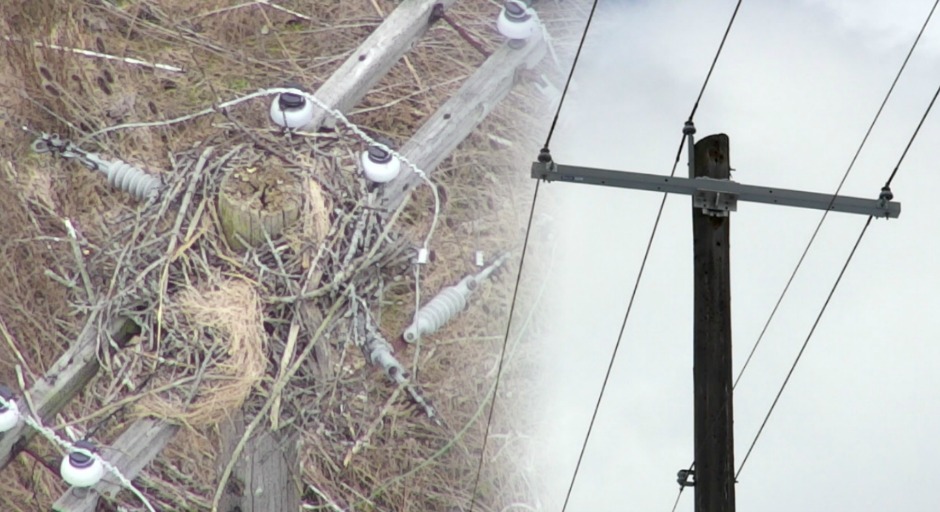Penn Power Completes Proactive Work to Protect Nesting Birds, Enhance Service Reliability
Akron, Ohio – As part of its ongoing efforts to protect nesting birds, the Pennsylvania Power Company (Penn Power) has proactively installed new fiberglass crossarms on nearly two dozen utility poles along the Route 18 causeway over the Shenango River Lake in Mercer County. The work will help prevent electrical service disruptions by discouraging ospreys from nesting on utility poles.
Crossarms are mounted on the top of a utility pole to hold up power lines or other equipment. Penn Power line workers replaced 21 wooden, double crossarms with a new, single fiberglass crossarm. Unlike a double crossarm, the single crossarm design does not entice an osprey because it is not large or stable enough to hold the nest, which can measure up to three feet in width.
“Ospreys typically arrive in Pennsylvania in late March and return to the same nesting sites from the year before,” said Amy Ruszala, an environmental scientist and avian expert at Penn Power’s parent company, FirstEnergy Corp. (NYSE: FE). “It was important to not only remove unoccupied osprey nests that were situated on our utility poles, but also take action to prevent the birds from making new nests on our equipment this spring.”
The Penn Power service area has experienced a spike in the osprey population over the past five years, but the company’s previous attempts to deter them from nesting on utility poles along the causeway have been unsuccessful.
Ospreys prefer to nest near large bodies of water in a large, bulky pile of sticks, put together on the top of a tall tree, a rocky ledge or utility pole crossarms. A nesting platform was installed by Penn Power near the lake to discourage them from nesting on utility poles, but the birds were not receptive to the structure.
“These nesting habits often place the birds near electrical equipment, which jeopardizes their well-being and can potentially cause power outages,” said Ruszala, who worked closely with Penn Power utility personnel and engineers last fall to identify pole nesting sites that would benefit from a single crossarm design.
Electricity to the distribution line that spans the Route 18 causeway had been rerouted to another line since June to protect the nesting birds and prevent hazardous situations like pole fires. With the new fiberglass crossarms providing a more permanent solution to the osprey nesting issue, the line has been reenergized and customers in the area are benefiting from a more reliable, resilient system.
While the birds were south for the winter, utility personnel also worked closely with FirstEnergy’s environmentalists and state wildlife officials to remove nests from substations and transmission towers. Ospreys are a month away from their peak breeding season and will lay their eggs between April and July.
Penn Power is a subsidiary of FirstEnergy and serves more than 160,000 customers in all or parts of Allegheny, Beaver, Butler, Crawford, Lawrence, and Mercer counties in western Pennsylvania. Follow Penn Power on Twitter @Penn_Power, on Facebook at www.facebook.com/PennPower, and online at www.pennpower.com.
FirstEnergy is dedicated to safety, reliability and operational excellence. Its 10 electric distribution companies form one of the nation's largest investor-owned electric systems, serving customers in Ohio, Pennsylvania, New Jersey, West Virginia, Maryland and New York. The company’s transmission subsidiaries operate more than 24,500 miles of transmission lines that connect the Midwest and Mid-Atlantic regions. Follow FirstEnergy online at www.firstenergycorp.com and on Twitter @FirstEnergyCorp.
Editor’s Note: Photos of Penn Power’s new upgrades to protect nesting birds are available for download on Flickr.
MEDIA CONTACT: Lauren Siburkis, (330) 203-8850

